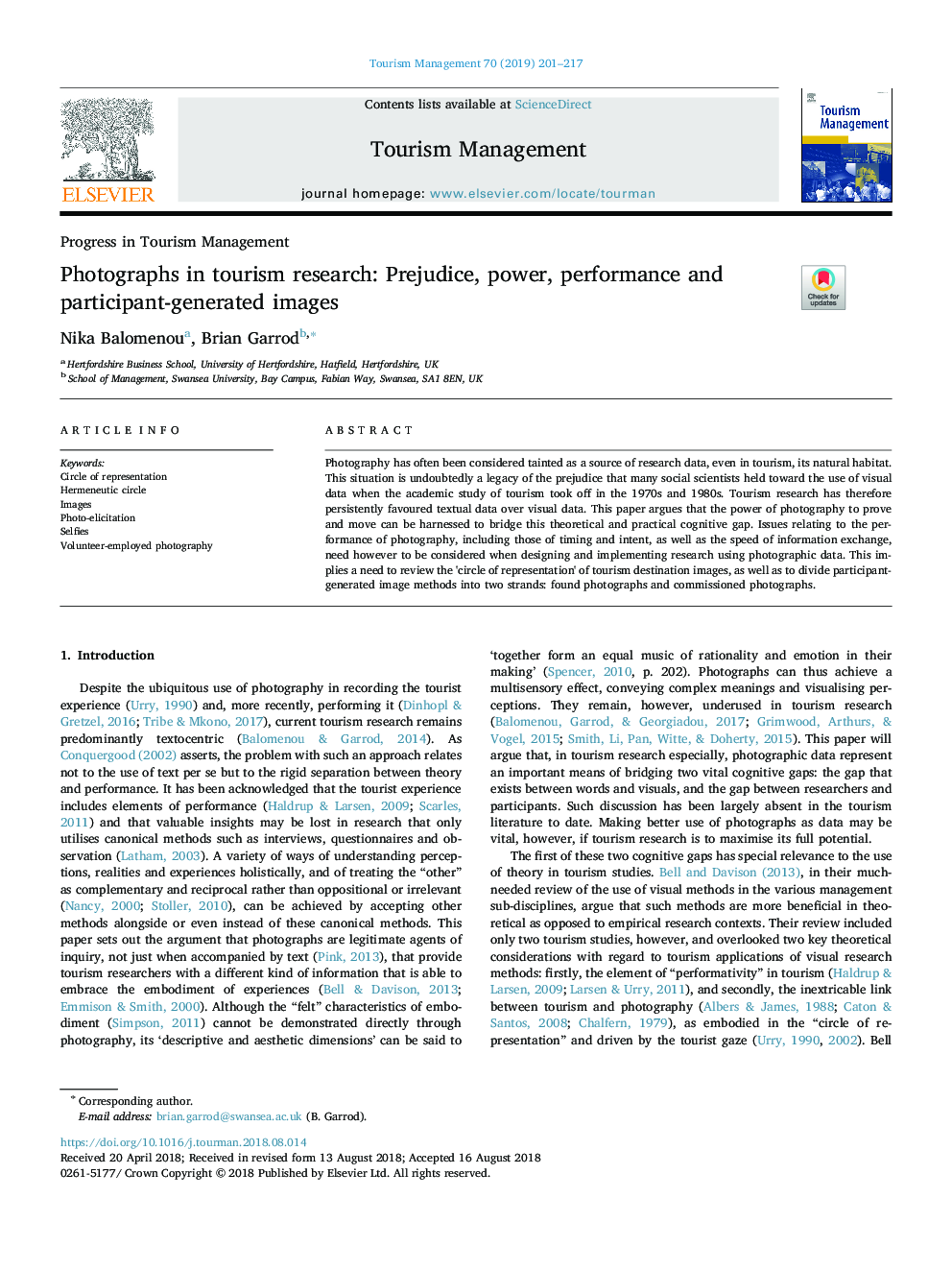| Article ID | Journal | Published Year | Pages | File Type |
|---|---|---|---|---|
| 11005089 | Tourism Management | 2019 | 17 Pages |
Abstract
Photography has often been considered tainted as a source of research data, even in tourism, its natural habitat. This situation is undoubtedly a legacy of the prejudice that many social scientists held toward the use of visual data when the academic study of tourism took off in the 1970s and 1980s. Tourism research has therefore persistently favoured textual data over visual data. This paper argues that the power of photography to prove and move can be harnessed to bridge this theoretical and practical cognitive gap. Issues relating to the performance of photography, including those of timing and intent, as well as the speed of information exchange, need however to be considered when designing and implementing research using photographic data. This implies a need to review the 'circle of representation' of tourism destination images, as well as to divide participant-generated image methods into two strands: found photographs and commissioned photographs.
Keywords
Related Topics
Social Sciences and Humanities
Business, Management and Accounting
Strategy and Management
Authors
Nika Balomenou, Brian Garrod,
